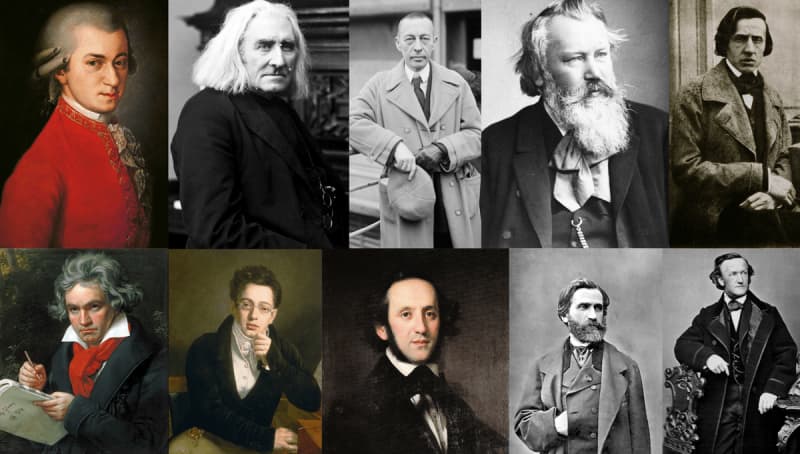Today, we’re looking at the lives and last performances of four violinists who died onstage, sharing their incredible talents up until the very last moments of their lives.
Ede Reményi (1828/30-1898)
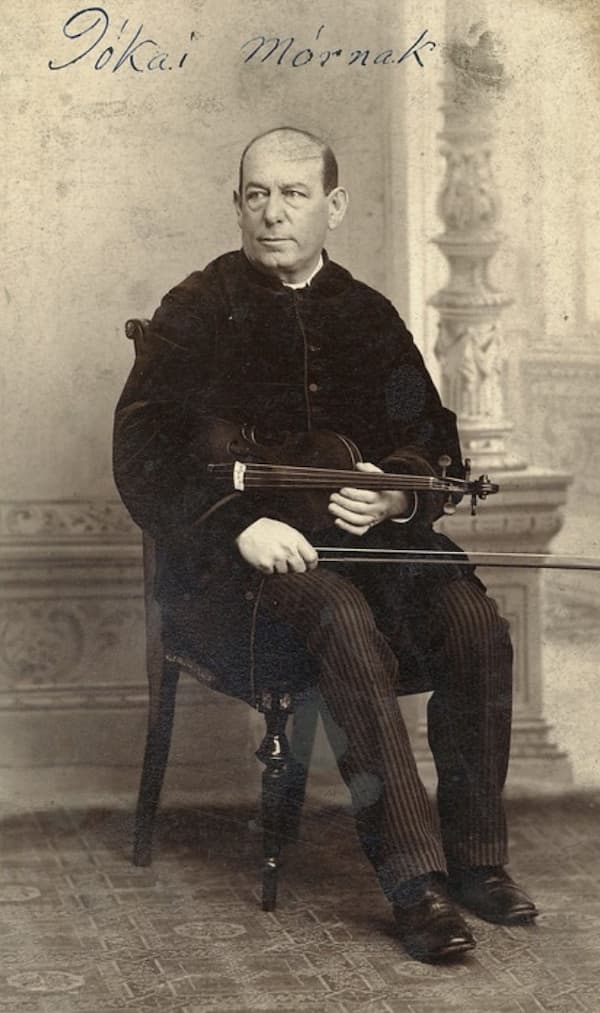
Ede Reményi
Ede Reményi was born sometime between 1828 and 1830 in the city of Miskolc in what is now Hungary, but which back then was the Austrian Empire.
In his mid-teens, he studied at the Vienna Conservatory. He became caught up in the revolutionary fervour that swept across Europe in 1848 and participated in the Hungarian Revolution.
That led to an exile in Germany, where he met figures like Johannes Brahms and Franz Liszt.
Online Lecture Excerpt Discussing Reményi and Brahms’s Intertwined Careers
He was eventually pardoned for his revolutionary activities and even became a soloist in the court of Emperor Franz Joseph I.
In later life, he enjoyed a truly international career that took him to North America, Asia, and Africa.
In May 1898, the Los Angeles Herald reported that he appeared in San Francisco before three thousand appreciative listeners. Nothing seemed to be amiss until the final piece:
“He had just completed a few bars of the difficult fingering when he leaned forward, as if to speak to one of the musicians in the orchestra, continuing his piece; he seemed to pause for a minute, and then slowly fell forward on his face. One of the musicians caught him just before he touched the stage and prevented him from rolling off. All was over.”
The doctors present tried to save him, but it was no use.
Václav Pichl (1741-1805)
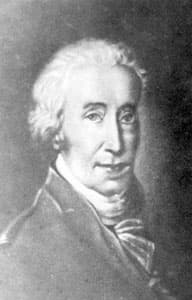
Václav Pichl
Václav Pichl was born in Bohemia in 1741. He studied singing and violin as a child and went to university to study theology, philosophy, and law.
However, when it came to choosing a career, he gravitated toward music. He became a professional violinist in 1762, when he was hired to be the first violinist at the legendary Church of Our Lady before Týn in Prague.
A few years later, he was hired to work as a violinist in a bishop’s short-lived private orchestra.
Next, he became a music director for a count in Prague, and then the first violinist of the Vienna court theater.
Václav Pichl: Violin Concerto in D major
His longest-lasting professional relationship was with Ferdinand Karl, Archduke of Austria-Este, the son of Emperor Francis I and Maria Theresa. Ferdinand worked in Italy, and Pichl worked with him there until France invaded Italy and Ferdinand retreated to Vienna.
During the invasion, French troops ransacked his home and destroyed his extensive musical archives. It was a devastating creative blow, and it was said that Pichl never recovered from it.
In January 1805, after returning to Vienna, Pichl made a fateful appearance at the palace of Prince Joseph Franz von Lobkowitz.
Lobkowitz was famous for his love and patronage of music. Just a few months before Pichl’s appearance at the palace, Lobkowitz’s private orchestra had played through Beethoven’s Eroica Symphony before it was ever played in public.
During his January 1805 appearance there, Pichl suffered a stroke and died, violin in hand.
Yu Zhao Gu (1958-2019)
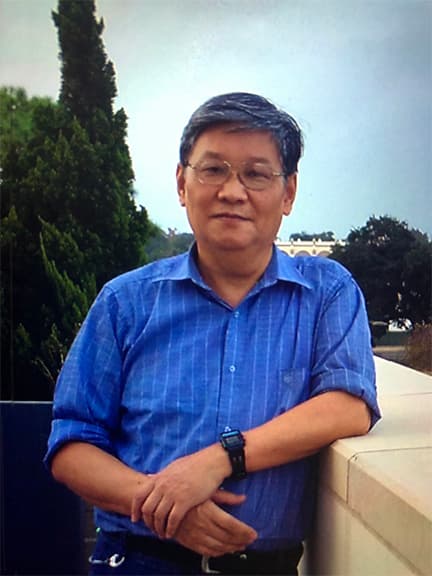
Yu Zhao Gu
Yu Zhao Gu was born in Shanghai to two pianists and began learning the violin at the age of eleven.
He earned a degree in violin performance at the Shanghai Music School and played with the Shanghai Symphony and Shanghai Philharmonic Orchestra.
He and his wife, a fellow violinist, had a meet-cute onstage while playing in Shanghai orchestras.
In 1995, they moved to Texas to further their studies at the University of Houston. They both became established freelance performers who worked across Texas.
In the spring of 2019, he took his seat onstage at the final concert of the season of the Symphony of Southeast Texas, an ensemble based in Beaumont, Texas. His wife was his stand partner.
A 2018/19 Description of the Symphony of Southeast Texas’s Work, featuring Footage of Yu Zhao Gu Performing
During the first work on the program, Gu fell out of his chair. The performance came to a halt, and the audience immediately rushed up to help. A cardiologist was present, and doctors from the audience kept trying to revive him until paramedics arrived. Tragically, despite their best efforts, he passed away.
His coworkers later wrote in tribute, “The first to say hello at rehearsal, Yu could always be counted on to greet you with a smile and a word of encouragement.”
Viktor Sedov (1948-2013)
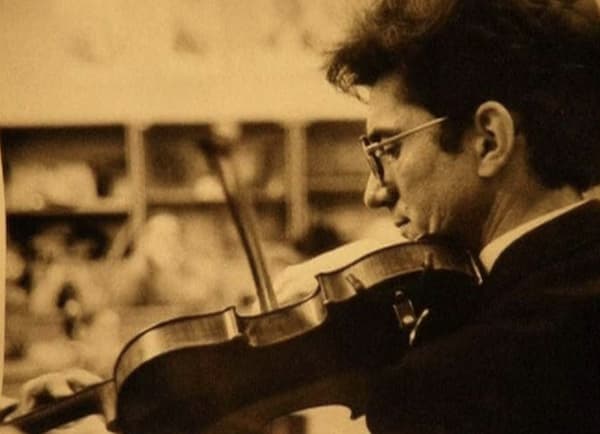
Viktor Sedov
Viktor Sedov was born in 1948 and began working at the Bolshoi Theatre in Moscow in the 1970s.
The Bolshoi is one of the most hallowed cultural institutions in Russian and Soviet history.
The organisation began in the 1770s under the orders of Empress Catherine the Great. For centuries, it has offered opera and ballet performances in a succession of facilities throughout wars, revolutions, violence, and political upheaval.
Facilities deteriorated over the generations. In 2005, a major restoration began. Costs ballooned upward to the equivalent of a billion dollars plus. After six years of work, the renovated theater finally reopened in 2011.
Footage of the Bolshoi Theater
In July 2013, second violinist Viktor Sedov walked into an unlit area of the new stage. Apparently, he believed that the pit area was level with the ground floor, as it had been pre-renovation.
However, during construction, the elevation of the pit floor had been lowered: a recipe for disaster.
Sedov fell about twenty feet (six meters) onto the concrete floor of the orchestra pit, possibly through a trapdoor. (Details in English about the incident remain scant to this day.)
Sedov was rushed to the hospital, but he succumbed to his injuries the following day.
After his death, a Bolshoi spokeswoman paid tribute to Sedov, saying that the Bolshoi especially valued his “sense of humour and extraordinary erudition.”
For more of the best in classical music, sign up for our E-Newsletter


